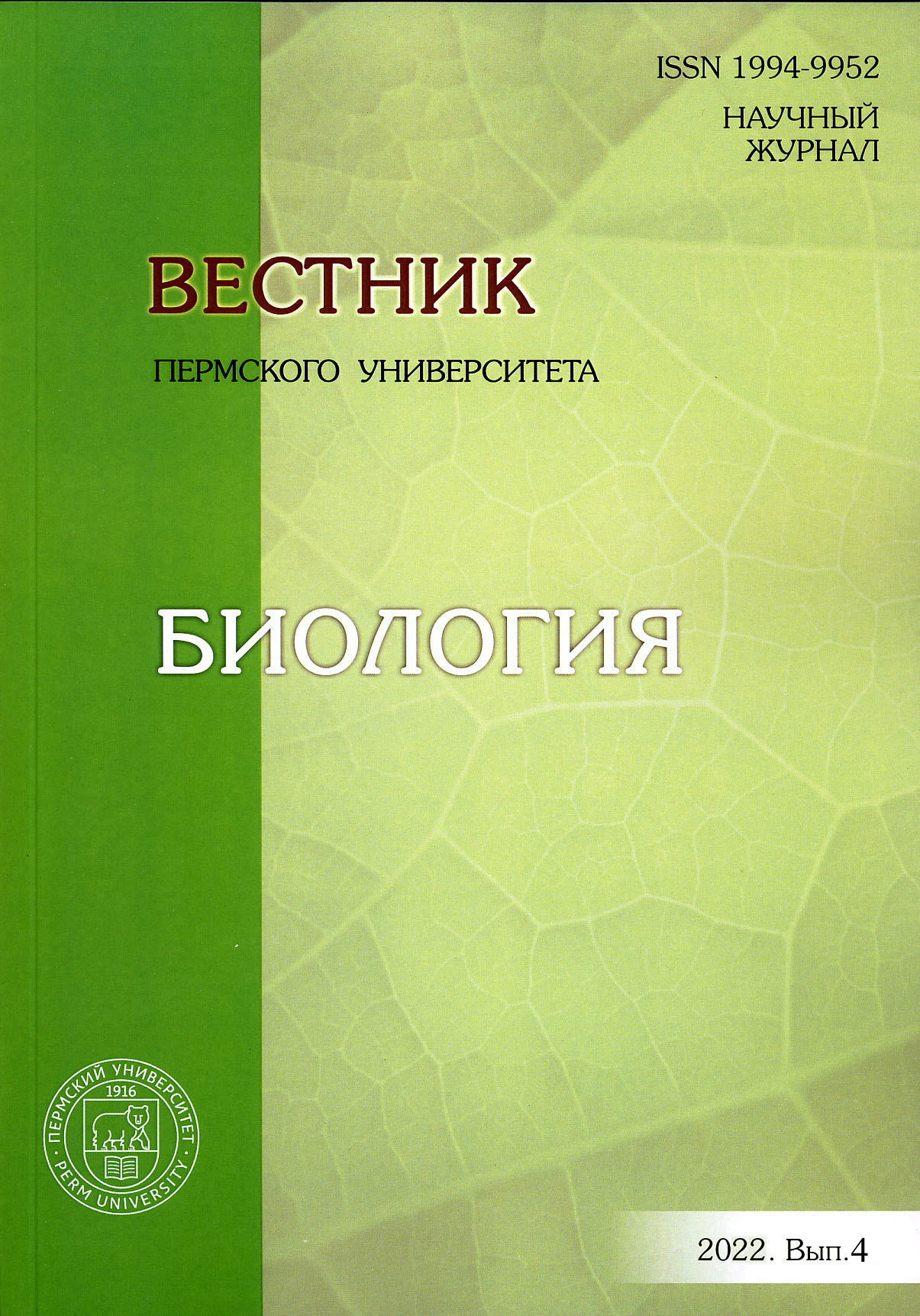Results of detection of poly-virulent bacterial strains Lactobacillus spp. during associative interaction with protozoa Blastocystis ho-minis in vivo
Main Article Content
Abstract
Article Details
References
Бондаренко В.М., Мавзютов А.Р., Голкочева Э. Секретируемые факторы патогенности энтеробак-терий // Журнал микробиологии, эпидемиологии и иммунобиологии. 2002. № 1. С. 84−90.
Грицюк О.В., Кузнецова К.Ю., Загайнова А.В. Об актуальности определения Blastocystis spp. в объ-ектах окружающей среды как потенциальных факторов риска возникновения протозойной инфекции человека // Гигиена и санитария. 2018. Т. 97, № 11. С. 1043−1045. DOI: 10.18821/0016-9900-2018-97-11-1043-45.
Егорова Т.П., Аршба И.М., Демерчян А.В. Протозойно-бактериальные ассоциации кишечника у макаков резусов // Ветеринария. 2021. № 1. С. 33−35. DOI: 10.30896/0042-4846.2021.24.1.33-36.
Ефимов Б.А. Характеристика микроорганизмов, колонизирующих кишечник // Журнал микробио-логии, эпидемиологии и иммунобиологии. 2002. № 5. С. 98−104.
Зеленова Е.Г. и др. Микрофлора полости рта: норма и патология: учеб. пособие. Нижний Новгород: Изд-во НГМА, 2004. 158 с.
Литвин В.Ю. Сапронозные аспекты энзоотии чумы // Успехи современной биологии. 2003. Т. 123, № 6. С. 543−551.
Литвин В.Ю., Пушкарева В.И., Емельяненко Е.Н. Биоценотические основы природной очаговости сапронозов // Журнал микробиологии, эпидемиологии и иммунобиологии. 2004. № 4. С. 102−108.
Мавзютов А.Р. и др. Факторы патогенности оппортунистических энтеробактерий и их роль в раз-витии диареи // Журнал микробиологии, эпидемиологии и иммунобиологии. 2007. № 1. С. 89−96.
Немова И.С. и др. Микроэкология организма человека: учеб. пособие. Ульяновск: Изд-во УлГПУ, 2012. 101 с.
Пушкарева В.И. Паразитизм в простейших как стратегия существования патогенных бактерий в почвах и водоемах // Успехи современной биологии. 2006. Т. 126, № 4. С. 323−333.
Соловьёв М.М., Большаков О.П., Галецкий Д.В. Гнойно-воспалительные заболевания головы и шеи: этиология, патогенез, клиника, лечение. М.: Умный доктор, 2016. 192 с.
Степанских А.С. Общая экология. М.: ЮНИТИ-ДАНА, 2000. 688 с.
Точилина А.Г. и др. Изучение биологических свойств штаммов рода Lactobacillus // Современные проблемы науки и образования. 2015. № 5. URL: https://science-education.ru/ru/article/view?Id=21579.
Яруллина Д.Р., Фахруллин Р.Ф. Бактерии рода Lactobacillus: общая характеристика и методы ра-боты с ними: учеб.-метод. пособие. Казань, 2014. 51 с.
Abd Н. et al. Survival and growth of Francisella tularensis in Acanthamoeba castellanii // Applied and Environmental Microbiology. 2003. Vol. 69(1). Р. 600−606. DOI: 10.1128/AEM.69.1.600-606.2003.
Boom R. et al. Rapid and simple method for purification of nucleic acids // Journal of Clinical Microbiol-ogy. 1988. Vol. 28. Р. 495−503. DOI: 10.1128/jcm.28.3.495-503.1990.
Brunder W., Karh H. Genome plasticity in Enterobacteriaceae // Journal of Medical Microbiology. 2000. Vol. 290. Р. 153−165.
Caprioli A., Morabito S., Brugere H. Enterohaemor-rhagic Escherichia coli: emerging issues on virulence and modes of transmission // Veterinary Research. 2005. Vol. 36. P. 289−311.
Clarke S.C. et al. Virulence of enteropathogenic Escherichia coli, a global pathogen // Clinical Microbi-ology Reviews. 2003. Vol. 16, № 3. P. 365−378.
Suresh K. et al. In vitro encystment and experimental infections of Blastocystis hominis // Parasitology Research. 1993. Vol. 79. P. 456−460.
